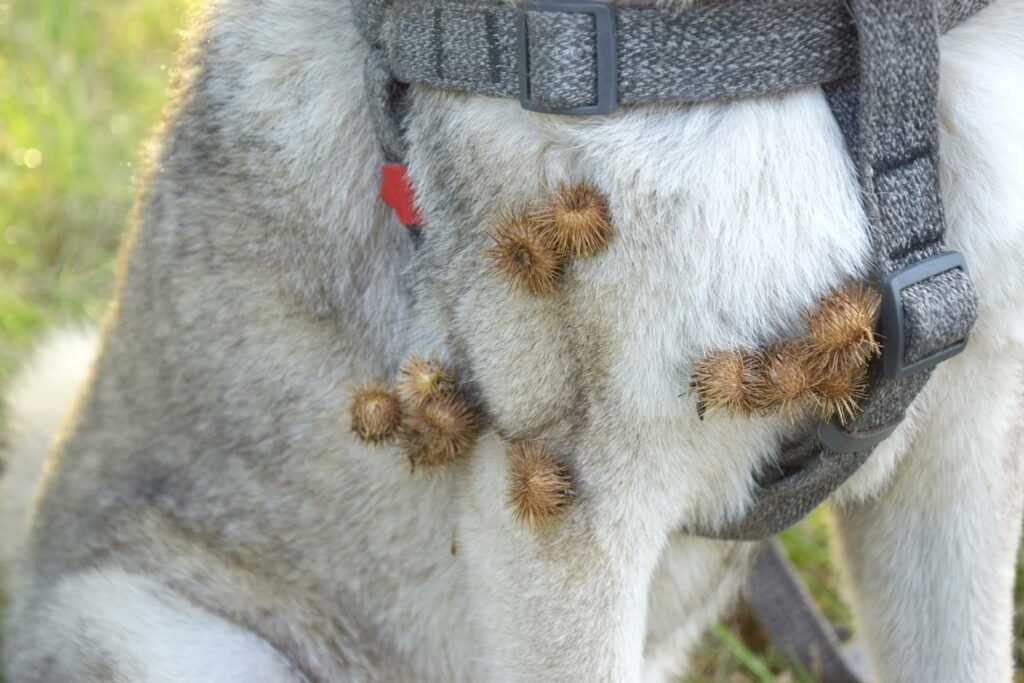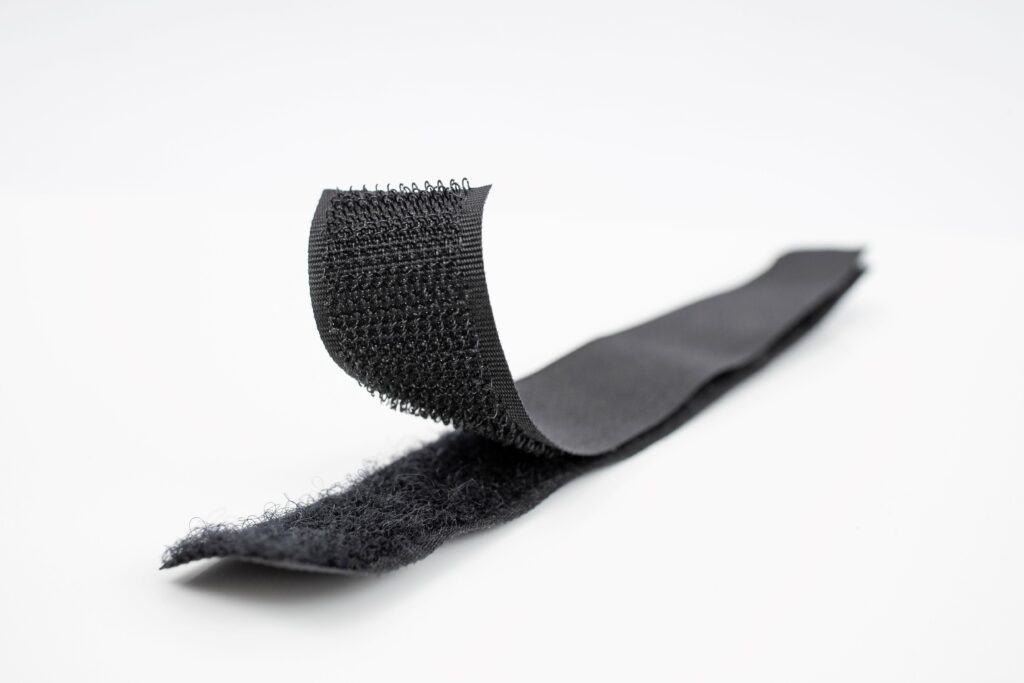When most people say “Velcro,” they’re not always talking about the brand—they’re talking about a type of fastener called hook and loop. Velcro is simply the company that made it famous, much like Kleenex is to tissues or Band-Aid is to adhesive bandages.
If you’re designing or manufacturing a bag, backpack, or carrying case, knowing the difference between Velcro and hook and loop—and understanding your options—can help you choose the right fastener for your project. Let’s dive into the history, the technology, and the practical considerations that go into making that decision.
What Exactly Is Hook and Loop?
Hook and loop fasteners consist of two woven strips:
- The hook side – a rough surface made up of tiny, stiff hooks.
- The loop side – a soft surface of flexible loops.
When pressed together, the hooks grab the loops, creating a secure yet adjustable closure. Pull them apart, and the connection releases without damaging the material.
There are many variations of hook and loop fasteners, including:
- Sew-on for permanent integration into fabric.
- Adhesive-backed for smooth, non-porous surfaces.
- Heavy-duty for high-load applications.
- Fire-resistant or chemical-resistant for specialized environments.
- Soft/quiet versions for tactical or medical use where stealth is important.
The Invention of Velcro – From Dog Fur to Space Missions
The story begins in 1941 with Swiss engineer George de Mestral. On a hunting trip, he noticed burrs sticking stubbornly to his dog’s fur. Curious, he examined them under a microscope and saw tiny hooks that latched onto loops in fur and fabric.

De Mestral spent years experimenting with synthetic fibers before successfully creating the first commercial hook and loop fastener. In 1955, he patented the design and named his company Velcro, combining the French words “velours” (velvet) and “crochet” (hook).
At first, Velcro was met with skepticism—it was seen as more novelty than necessity. But when NASA adopted it for space suits and zero-gravity equipment in the 1960s, the world started paying attention. Soon, it appeared in ski gear, athletic wear, and eventually, bags and backpacks.
Life Before Hook and Loop – The Inconvenience Era
Before hook and loop, closures on bags and gear relied on:
- Buttons – small, precise, and slow to fasten.
- Snaps – faster than buttons, but prone to breaking under stress.
- Buckles – sturdy, but bulky and time-consuming to adjust.
- Zippers – great for security, but prone to jamming or breaking.
These methods worked—but they weren’t always quick, adjustable, or glove-friendly. Hook and loop offered something revolutionary: a closure that could be opened or secured in seconds, even with one hand, and still handle rugged conditions.
Velcro vs Hook and Loop – Brand vs Generic
The Velcro Companies were the first to manufacture hook and loop on a large scale, but today they’re far from the only player. Many companies produce hook and loop fasteners with varying levels of quality and specialization.
Key differences between Velcro brand and generic hook and loop include:
- Durability – Velcro often offers a longer cycle life before losing holding strength.
- Specialty products – Velcro produces flame-retardant, medical-grade, and military-spec options.
- Cost – Generic hook and loop can be less expensive, making it appealing for high-volume projects.
- Consistency – Branded Velcro tends to have tighter quality control, which can be crucial for critical applications.
Just like you wouldn’t call every tissue “Kleenex,” technically not every hook and loop fastener is “Velcro.” But the brand name is so widely used that it has entered everyday language—much to the frustration of trademark lawyers.
Choosing the Right Hook and Loop for Bag Manufacturing
Not all hook and loop is created equal. In bag and backpack design, we evaluate several factors before deciding which to use:
- Strength & Holding Power
- For heavy gear or military packs, heavy-duty hook and loop is essential.
- For lightweight cases, standard strength may suffice.
- Cycle Life
- Frequent use calls for high-cycle hook and loop to ensure longevity.
- Environmental Conditions
- Waterproof, UV-resistant, or temperature-tolerant options for outdoor and industrial gear.
- Noise Level
- In tactical or medical situations, “quiet” hook and loop minimizes sound when opening a bag.
- Integration Method
- Sew-on for fabric-based designs.
- Adhesive-backed for rigid panels inside a case.
Example from our experience at Fieldtex:
- For medical bags, we often choose quiet, high-cycle hook and loop for quick access without disturbing patients.
- For military gear, we source heavy-duty, IR-compliant hook and loop that performs in extreme weather and passes strict durability tests.

The Legacy of Hook and Loop in Manufacturing
From securing tools in a field technician’s case to fastening modular pouches on a tactical backpack, hook and loop has transformed how we think about closures. It’s fast, reliable, and adaptable—and decades after its invention, it remains a staple in both consumer and industrial products.
Whether branded as Velcro or made by another manufacturer, hook and loop’s versatility ensures it will continue to be a go-to fastener in bag manufacturing for years to come.
Conclusion – Making the Best Choice for Your Project
The Velcro vs hook and loop debate really comes down to brand recognition vs material specification. As a designer or manufacturer, the decision should be based on function, environment, and user experience—not just the name on the packaging.
At Fieldtex, we’ve spent decades helping our customers choose the right materials for their products. If you’re designing a bag, backpack, or carrying case and want expert guidance on closures, explore our manufacturing capabilities or contact us to discuss your next project.

